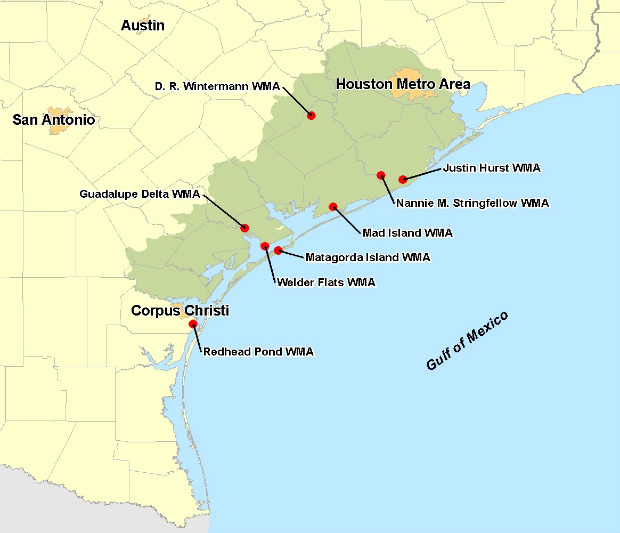Wetland Conservation and Management for the Texas Central Coast
Introduction
The coastal marshes, inland freshwater wetlands and rice fields of the Texas Central Coast provide important habitats supporting a diverse array of waterfowl, wetland birds and other wildlife. These wetland habitats provide the essential resources to meet the daily requirements of waterfowl and wetland birds to live and reproduce. Unfortunately, wetlands are declining in quantity and quality, and recent information suggests that the existing wetland resources may not be enough to sustain current population levels of some wetland bird species. For example, approximately 2.1 million ducks and geese migrate to the Texas Coast each fall and winter. They are attracted to the coastal marshes, inland freshwater wetlands, and harvested rice fields where they feed to acquire nutrients and build up energy reserves. Current data on waterfowl energy demands and food supply produced by available foraging habitat indicate a potential food shortage for much of the Gulf Coast, see Ducks Unlimited Gulf Coast Initiative webpage. Thus, actions that conserve wetlands and increase their productivity should be considered to offset wetland losses.
Existing wetlands can be protected from conversion for land development through acquisition or a perpetual conservation easement. However, other actions are necessary to create additional wetland habitat and to improve wetland quality. Habitat projects can be designed and constructed to establish new wetland acres or enhance the quality of existing wetlands. Management techniques can be implemented to maintain wetland productivity for the benefit of wildlife. The information in the following web pages (links to the left) offers general examples and descriptions of wetland projects and management techniques typical to the Central Coast of Texas.
The information provided here and the following web pages are for educational purposes only. The intent is to provide guidance and foster ideas for those interested in developing and managing wetlands on their property.
